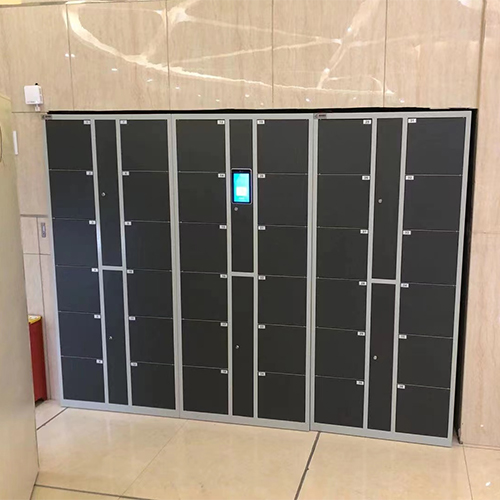In an era where technology is rapidly evolving, facial recognition lockers represent a significant advancement in secure storage solutions. These lockers utilize biometric authentication to grant access, eliminating the need for traditional keys, PIN codes, or RFID cards. By leveraging artificial intelligence (AI) and machine learning, facial recognition lockers offer enhanced security, convenience, and efficiency. This article explores the technology behind facial recognition lockers, their benefits, potential drawbacks, and their applications across various industries.
How Facial Recognition Lockers Work
Facial recognition lockers operate using sophisticated AI algorithms that analyze unique facial features to verify identity. The process typically involves the following steps:
1. Enrollment – A user registers by having their face scanned by the locker’s camera. The system captures key facial landmarks such as the distance between the eyes, nose shape, and jawline, converting them into a digital template.
2. Storage – The facial data is encrypted and stored securely, often in a cloud-based or local database.
3. Authentication – When a user attempts to access the locker, the system scans their face and compares it with stored templates. If a match is found, the locker unlocks.
4. Access Control – Administrators can set permissions, allowing only authorized individuals to open specific lockers.
Advanced systems incorporate liveness detection to prevent spoofing attempts using photos or masks.
Advantages of Facial Recognition Lockers
1. Enhanced Security
Unlike traditional lockers that rely on keys or codes (which can be lost, stolen, or shared), facial recognition ensures that only authorized users can access stored items. The uniqueness of facial features makes unauthorized access extremely difficult.
2. Convenience
Users no longer need to remember passwords or carry physical keys. A simple glance at the camera is sufficient for access, making the process seamless and efficient.
3. Contactless Operation
In a post-pandemic world, minimizing physical contact is crucial. Facial recognition lockers provide a hygienic alternative to touch-based systems.
4. Scalability and Integration
These lockers can be integrated with existing security systems, such as surveillance cameras and access control platforms, enhancing overall facility security.
5. Audit Trail
Administrators can track who accessed a locker and when, improving accountability and reducing theft risks.
Potential Challenges
1. Privacy Concerns
Storing biometric data raises privacy issues. Organizations must comply with data protection regulations (e.g., GDPR) and ensure encryption to prevent misuse.
2. Accuracy and Bias
Facial recognition systems may struggle with accuracy in low-light conditions or with diverse facial structures. Poorly trained AI models can exhibit racial or gender bias.
3. Cost
Implementing facial recognition lockers requires significant investment in hardware and software, which may be prohibitive for small businesses.
4. Technical Limitations
Glasses, masks, or changes in appearance (e.g., facial hair) can sometimes hinder recognition.
Applications of Facial Recognition Lockers
1. Corporate Offices
Companies can use these lockers to secure sensitive documents, laptops, or employee belongings without the risk of lost access cards.
2. Gyms and Sports Facilities
Members can store personal items securely without worrying about forgotten locker combinations.
3. Airports and Train Stations
Travelers can temporarily store luggage with confidence, knowing only they can retrieve it.
4. Educational Institutions
Universities can deploy facial recognition lockers in libraries or dormitories to prevent theft.
5. Healthcare Facilities
Hospitals can use them to safeguard patient records, medications, and staff belongings.
The Future of Facial Recognition Lockers
As AI improves, facial recognition lockers will become faster, more accurate, and more affordable. Future developments may include:
- Multi-factor authentication (combining facial recognition with fingerprints or voice recognition).
- AI-powered anomaly detection (alerting security if suspicious behavior is detected).
- Integration with smart city infrastructure (e.g., public storage solutions).
Conclusion
Facial recognition lockers represent a transformative shift in secure storage technology. While challenges such as privacy and cost remain, their benefits in security, convenience, and hygiene make them an attractive solution for businesses and institutions. As the technology matures, we can expect wider adoption across industries, paving the way for a more secure and efficient future.
(Word count: ~1000)
Would you like me to expand on any specific section?




















 WhatsApp
WhatsApp Phone
Phone